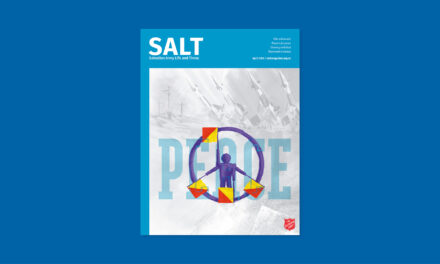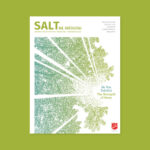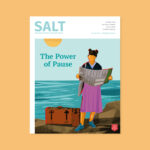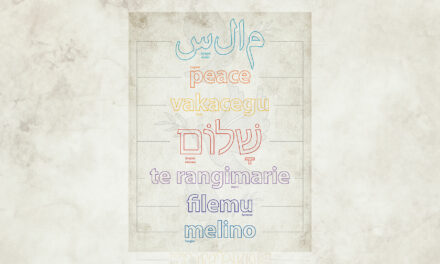
Justice, Mercy and Hope
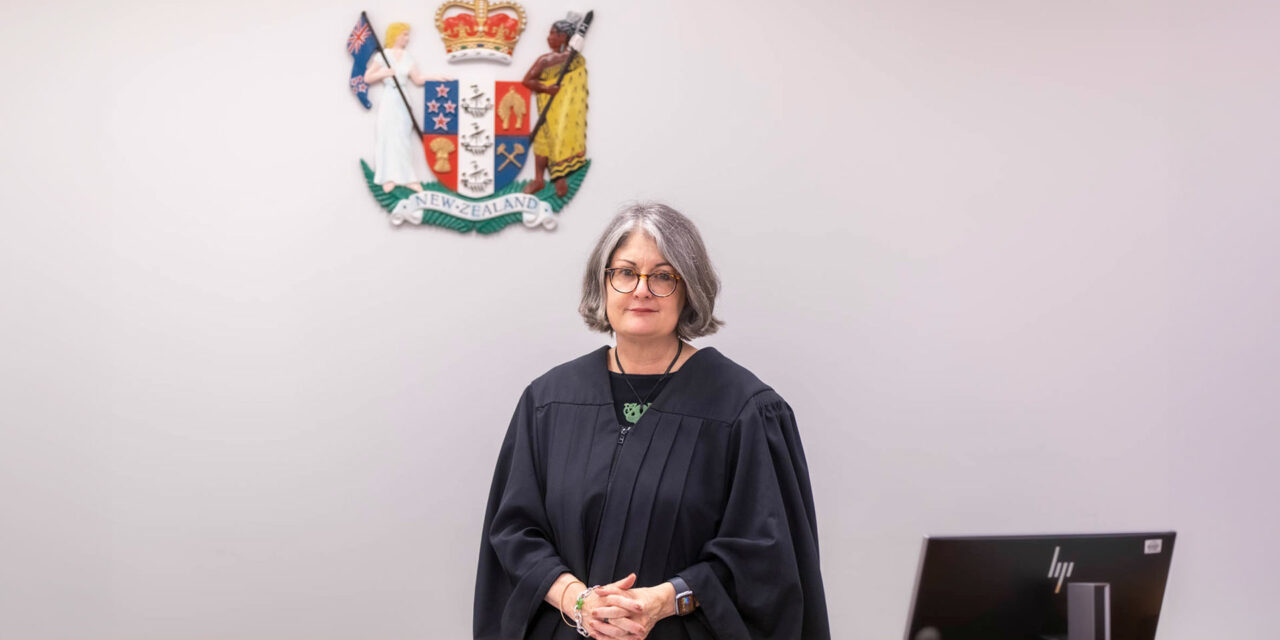
For the past decade, the Alcohol and Other Drug Treatment Court (AODTC)—Te Whare Whakapiki Wairua (The House That Uplifts The Spirit)—has been successfully interrupting the cycle of repeat offending through its intensive rehabilitation programme. The Salvation Army has been a key treatment provider in the programme and also an important partner in the initial formation of the court and its ongoing evaluation and development. Currently there are three adult drug courts in Aotearoa: Auckland City, West Auckland and Hamilton. And the results are in: statistics show that intentionally treating addiction and addressing underlying trauma is the circuit breaker for criminal offending. Not only are individual lives being transformed, but also those of whānau (family) and the wider community.
Judge Lisa Tremewan has been practising law in Aotearoa since 1986 and was appointed to the bench in 2005. After nearly two decades as a judge, Lisa reflects saying, ‘I have always had an interest in using the mechanisms we have in the community, and in my particular case that means the law, to effect justice. And I am convinced that must include social justice.’
‘Blessed with a burden’
In 2009, Lisa and three other judges attended the National Association of Drug Court Professionals (NADCP) conference in the USA where drug treatment courts have been around since 1989. Lisa explains that these courts are ‘well established, well regarded and extremely well researched’. With more than 4000 of these courts in the US, including Texas, some correctional facilities have closed in recent years in favour of investing more in therapeutic jurisprudence (law reform that works to positively impact the psychological wellbeing of offenders) because it works.
The conference was life-changing for Lisa. ‘It was a profound experience that changed me personally and professionally. I felt “blessed with a burden”, as it was obvious there were far more effective ways to deal with these issues within the system, and how far behind we were in New Zealand. I felt a sense of responsibility to try to do something about that.’ So, Lisa and her colleague, Judge Ema Aitken, then worked with experts in the field and officials to establish the new court.
Lisa explains that for many offenders prison becomes a ‘revolving door’ and more of a second home than any great deterrent. ‘Taking a punitive approach to offending that has been driven by unaddressed addiction is ineffective because you cannot punish the addiction away. Unless something meaningful is done to provide a circuit break that addresses underlying issues, nothing changes.’
Salvation Army Addiction Services National Operations Manager Mike Douglas shares Lisa’s burden. ‘No one wakes up one day and says I’m going to become an addict! It’s never a choice. It’s a way of coping with life’s trauma. Sexual or family violence, abuse in state care, cultural marginalisation—we need to be addressing these deeper issues if we are to break the cycle of addiction and repeat offending. Graduates of the AODTC are living proof this approach works.’
AODTC graduate John* says, ‘My addiction was meth mainly. I was in jail all my life and with the gangs. I was a lost and angry person. I was never there for my children because I was always in jail. When I came into the drug court, I got a glimpse of what a role model was, and I wanted my sons to have someone to look up to. Now I’m in full-time work—I’d never had a job in my life! I’ve got my sons now, and if it wasn’t for the drug court, I wouldn’t have this smile on my face. I have so much gratitude in my life now.’
When you know better
Lisa quotes civil rights activist Maya Angelou when she says, ‘When you know better, you should do better’. Not only is Lisa adamant about the effectiveness of therapeutic jurisprudence, but she now has the numbers and evidence to prove that it really works. Research by Impactlab (October 2022) revealed that the AODTC programme directly reduces addiction, offending, victimisation, risky behaviour, family violence, and smoking, while also improving mental health, driver licensing, employment and more. The report also demonstrated that the AODTC achieved better outcomes than the traditional approach for less expense—for every $1 spent, there is a $2 return. And these figures are conservative.
In a nutshell, the AODTC aims to reduce reoffending, reduce alcohol and other drug consumption and dependency, reduce the use of imprisonment, positively impact on health and wellbeing, reduce the number of victims of crime and be cost-effective. Mike explains that the AODTC model of treatment takes away the adversarial nature of the prosecution and the defence. ‘The prosecution, the defence and police work together constructively for the overall health and wellbeing of the person facing the court. There is a high degree of accountability from the judge, so if you fail to comply you can incur a range of sanctions that might include time in custody; but ultimately everyone is working together, which is refreshing, person-centred and strengths-based.’
There are, of course, exclusion criteria for the AODTC. Defendants who face charges of sexual offending, arson or serious violence are not eligible for the programme. Participants must be aged 17 and over and have charges driven by AOD dependency, like recidivist drink drivers. People coming into the court are those who are high risk in terms of reoffending and a risk to themselves, their family and the community.
Some have suggested that people stuck in this sort of cycle are not capable or motivated to change. Lisa is quick to counter this view. ‘We see participants who are very damaged and have been trapped in the system their whole adult lives. However, the drug court can be like a T-junction—it’s almost like you pick up the train and put it on a different track and anything’s possible. It can seem unbelievable that given an opportunity for a very different life people can respond so positively. When I see that, it becomes clear that there are people in the criminal justice system up and down the country who would benefit from this model—we need more of these courts in Aotearoa.
A soft option?
While some may mistake the programme for a ‘soft option’ on crime, Lisa is emphatic that the results speak for themselves.
‘To say it’s a soft option is an ill-informed view. Some people spend longer in the AODTC than they would have in prison. They are in the programme for about 18 months on average—it’s basically a full-time job because participants are doing treatment, various courses and programmes, community work, drug testing and they are scrutinised by the court the whole time. Entering recovery and dealing with your back-story and facing your issues—with all the intensive, long term and often grueling work that this entails—takes much courage, commitment and hard work. Becoming well is very challenging, but through that courageous work wellness and change are possible.’
Shelley* says, ‘I was doing crime, stealing cars and selling drugs. My life was full of darkness. I used to think it was me against the world, but actually it was me against myself. You have to face the consequences of your actions, and I was prepared to do that. Today I love myself and believe in myself. The AODTC gave me the kick up the backside I needed.’
Mike is careful to explain that ‘whether we want to admit it or not, we are all on a continuum of trauma and wellness. Some people go through life and never recognise that the hurtful things they do towards others, or the way they poorly react to things, frequently have been influenced by the trauma experienced in life.’
Culture as cure
While the vision for the courts here was based on the success and evidence of what is happening in America, it needed to be indigenised to New Zealand.
‘The name of the court—Te Whare Whakapiki Wairua (The House That Uplifts The Spirit)—was gifted by Sir Pita Sharples, who was heavily involved,’ explains Lisa. ‘Each court has crafted panels by artist Steve Gibbs (Ngāi Tāmanuhiri, Rongowhakaata and Rongomaiwahine). The themes of the taonga reference our bicultural heritage but also refer to the Serenity Prayer: Te Wairua Mārie, Serenity/Surrender; Manawanui, Courage; and Māramatanga, Wisdom.’
Mike goes on, ‘Culture is a critical cornerstone of the drug court. Culture and tikanga play a front and centre role in everything the court does. Each court has its own pou oranga (cultural champion/recovery model) and everything is based in the principles of manaakitanga and self-determination, respect and upholding the mana of a person regardless of what their circumstances might be.’
Andy* says, ‘When I heard the judge speaking in Māori—that just got to me somehow. I’d never seen that before.’
James* says, ‘In the normal courts you are just a number. They just want to get you through the system and out of their face. So I found it profound that the drug court could be part of my tikanga—part of my culture. Now I’m a loving man—a loving partner and father. I am who I was always meant to be.’
Living and breathing examples
Mike comes across graduates regularly—people he’s met in Salvation Army treatment centres, as part of the AODTC programme. ‘The Salvation Army’s mission is to transform lives and reform society—and graduates are living and breathing examples of that. Many go on to do both Level 4 mental health support qualifications and degrees in addiction studies, going on to work as peer support workers, case workers or as clinical staff in various treatment services across the motu (land). The peer role is incredibly important—having others beside you who have walked in shoes like yours and who understand what it is to have lost everything and be in that place of despair and hopelessness. Often peers are graduates themselves, who walk alongside new court participants with empathy and compassion and demonstrate that key characteristic of hope. They also have the capacity and clout to speak powerfully into the lives of court participants in a very real and no-nonsense way.’
Changing the narrative
Mike has worked in the addiction and mental health space for many years, enabling him to be very frank. ‘Sadly, there is still underlying stigma and moral judgement placed on those who experience mental health and addiction challenges in life. People have learnt not to voice that opinion overtly today, but if you scratch below the surface there’s sadly still a lot of that kind of thinking in society. That old-fashioned idea that people have some kind of deficiency or moral failure is simply not true. The truth is that our shared humanity means that we are all subjected to traumatic events. The unexpected and unwanted could happen to any of us, at any time, causing pain and distress and prompting a search for ways to cope and survive. Salvationists will recall that old saying “there but for the grace of God go I…”, which still inspires us to roll up our sleeves, and in the words of William Booth, extend the hand of help to “others” and fight for their transformation and freedom through God’s power.’
* Names changed to protect identity.


